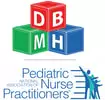Separation Anxiety Disorder
|
Separation anxiety symptoms are considered developmentally inappropriate after toddlerhood; average age of onset of symptoms consistent with disorder is 7. Separation anxiety disorder may be diagnosed when symptoms that cause clinically significant distress in social, academic, or other important areas of functioning persist longer than four weeks in children/adolescents.
Characterized by... At least three of the following behavioral or physical symptoms: Behavioral Symptoms:
|
Differential:
|
Separation Anxiety Screening and Assessment
Child Report:
- Screen for Child Anxiety Related Disorders (SCARED) - Child Form (ages 8-18)
- Spence Children’s Anxiety Scale - Child Version (ages 3-18)
- Separation Anxiety Avoidance Inventory for Children (SAAI-C) (ages 4-18) ($)
- Screen for Child Anxiety Related Disorders (SCARED) - Parent Form
- Spence Children's Anxiety Scale - Parent Version
- Spence Preschool Anxiety Scale - Parent Version
- Separation Anxiety Avoidance Inventory for Parents (SAAI-P) ($)
Treatment
Psychotherapeutic:
- Cognitive Behavioral Therapy (first-line treatment)
- Mindfulness-based Stress Reduction Therapy
- Mindfulness-based Cognitive Behavioral Therapy
- Meditation
- Selective Serotonin Reuptake Inhibitors (SSRIs)
Articles
Resources
For Parents/Caregivers:
- What to Do (and Not Do) When Children Are Anxious (Child Mind Institute)
- Separation Anxiety Disorder in Children, Summary for Families (Cedars Sinai Hospital)
- Coping Cat for Parents
- Worry Wise Kids
- Anxiety and Depression Association of America
- American Academy of Child & Adolescent Psychiatry Anxiety Disorders Resource Center
*Separation anxiety content originally curated by Catherine Cheely, BSN, RN, CPN and M. Ryan Goldstone, BSN, RN.
